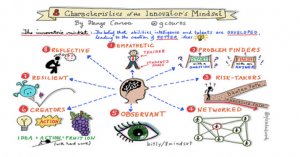Growth and Innovation: The Mindsets of Success
September 27, 2016 - 4 minutes readAt our September parent information evening, Principal Valerie Brady and Vice-Principal Nathan Blackburn outlined the routines and structures at Ridgeview school to ensure a strong start to the school year. Mr. Blackburn, in addition to his duties as Vice-Principal, enrolls a grade 6 class, and shared his excitement around teaching the new BC Curriculum. Mr. Blackburn expands on the impact of the new curriculum on student learning at Ridgeview as follows:
I’m excited about teaching the new BC Curriculum. “Building Student Success”, the curriculum has a wonderful way of balancing of foundational skills with competencies and content. It is a wonderful platform for developing thinking, reflective, classrooms.
It also asks us to take risks. With an Inquiry-based learning approach, students are expected to ask questions and seek out answers. They have the guidance of their teachers, of course, but this form of investigation can be like detective work – exciting, engaging, and sometimes, maybe a little new, and maybe a little scary.
This is why we talk about Mindsets.
Last year, we began the discussion with our learners about developing a Growth Mindset. Based on the work of psychologists Carol Dweck and Angela Duckworth, we now know that developing a Growth Mindset may be the most important key for unlocking to door to success. Having a Growth Mindset, or having Grit, as we like to say, means that you are willing to take risks, to explore the unknown, and not let obstacles get in your way. Those with Grit understand that perseverance in the face of a challenge is the path to personal accomplishment. Like the competencies of the new curriculum, we know that this mindset can be learned. We do this by challenging our students to take risks in their learning, by encouraging them to reflect on their successes and mistakes, and by helping them to apply these lessons when they try, try, try again.
If a Growth Mindset asks students to stand tall in the face of a challenge, an Innovators Mindset gives them the courage to seek out those challenges in the first place. It is a call to exploration, to invention, to innovation. Take a look at this graphic developed by educator George Couros.
In his book, ‘The Innovator’s Mindset”, Couros understands that a caring, empathetic teacher can provide a safe environment for our students to be problem finders, and problem solvers. He knows that taking risks, collaborating with others, and putting your ideas into action gives students a feeling of success that can carry them through their toughest challenges.
When we empower students to wonder, to explore, and to take risks, they develop the confidence they need to face whatever challenges the future may hold. In this way, they have the mindsets they need to become leaders of the future.
This work is being explored in many different ways in our classrooms. It may look like building rollercoasters, like starting a business, like preforming a reader’s theatre play or by taking our first small steps through the Ridgeview forest. Ask your child what they did this week that was new, exciting, and challenging.
And the next time your child asks you a question, maybe “why can’t we breath underwater like sharks do?” don’t just answer, say, “Let’s find out together.” Become an explorer with your child. Don’t tell them about the water; help them learn how to swim. Maybe even with the sharks.

Recent Comments